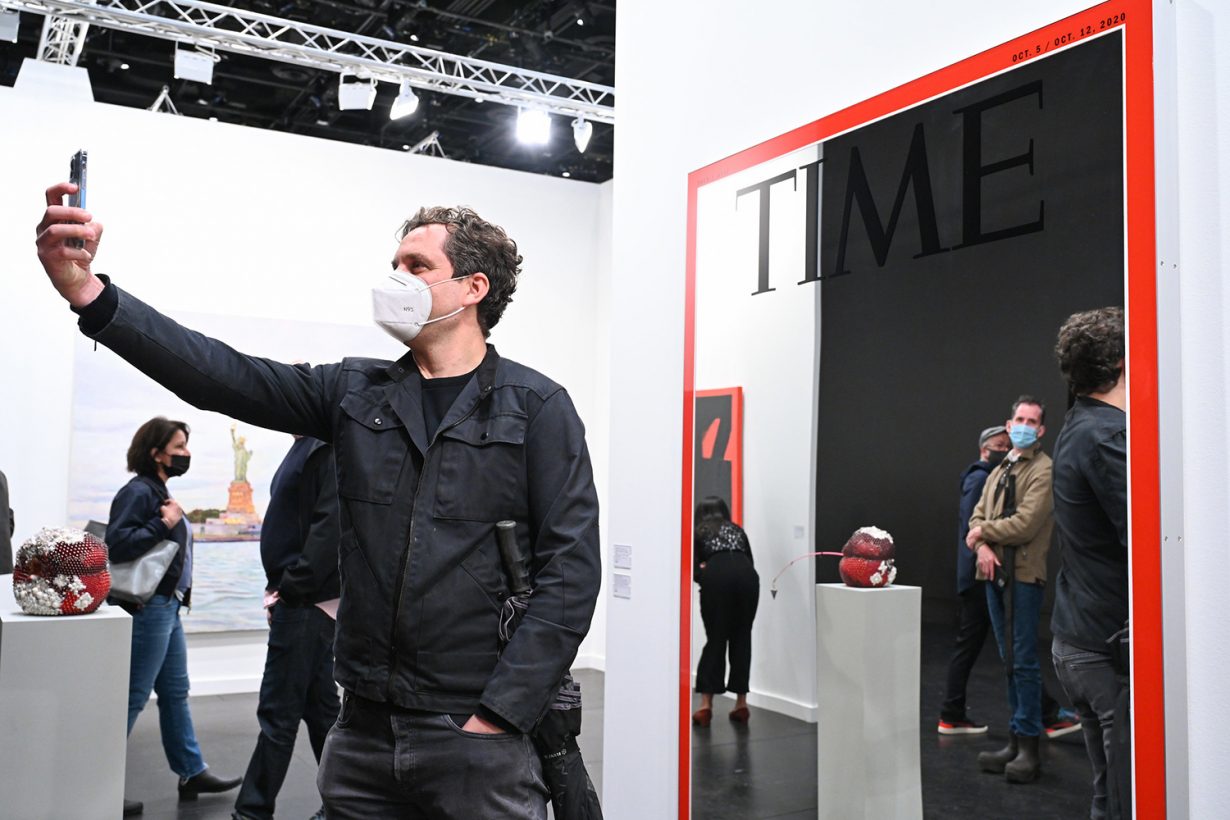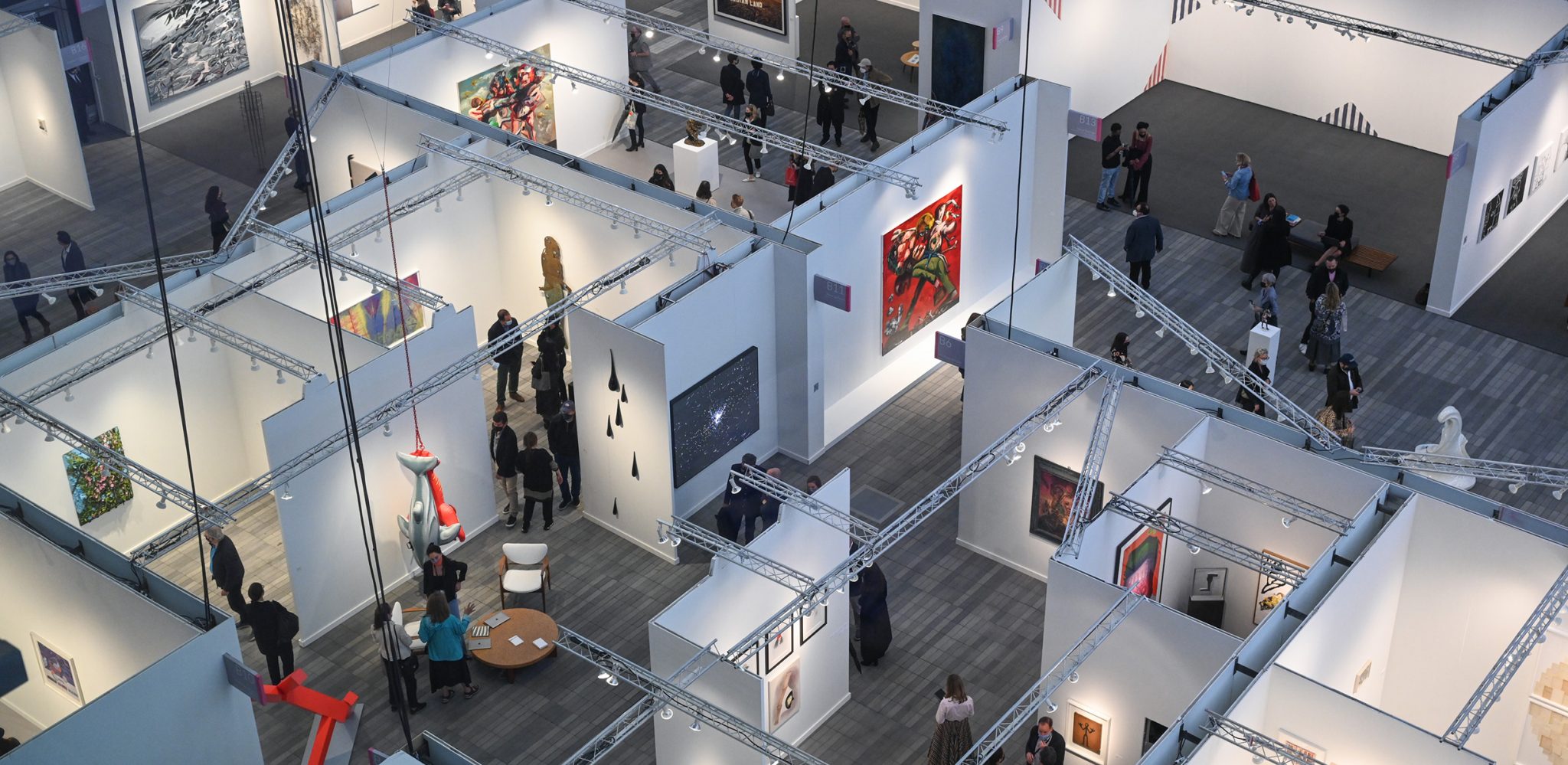A strange thing about the artworld is the expectation that one be clued-in on every echelon of it
A friend of mine has followed the same creative technique for a couple of decades: in the evenings, he puts a Hollywood movie – usually action or sci-fi – on TV, then settles down on his sofa and makes drawings, occasionally glancing up at the screen. The plots, alien invasion or whatever, are generally easy enough to follow that way, he says, and the rest makes for a gaudily colourful ambience while he’s getting something done that matters to him. He likes these flicks, but he doesn’t have any respect for them: they’re just big, dumb things going on in the background, phenomena of no real importance best kept at arm’s length. Anyway, in totally unrelated news, art fairs are back and art auctions are going great.
Perhaps, like me, you’ve read some articles informing you of these facts – detailing the spending, wryly characterising those who’ve gone through the labyrinthine checks (if they truly had to) to get into Frieze New York as ‘art addicts’, tabulating the sell-out booths in the Shed, etc; or noting, in texts that conflate the art market with the resale market, that auction prices are miraculously above pre-pandemic levels and NFT sales are off a cliff. And then maybe, just maybe, you thought: why did I read that? These facts make no real difference to my life. I could have spent those ten minutes drawing, or taking a nap.

For many of us without real stakes in the financial side of the artworld, it’s a reflex, this keeping-up: vaguely assumed to be part of that amorphous thing, The Discourse. And on one level maybe it’s good to know that the fair system is getting back on its feet, though personally I wish it would drop dead permanently and allow the gallery system to breathe. Overall, such kneejerk fidelity to the timeline has a depressant if not angering effect – it’s all too easy to correlate big spending on art with the big profits that the superrich have raked in during the pandemic, and seethe and sigh – and paying close attention is perhaps a sign of not knowing how to manage your attention. Is it worth ploughing through the updates in order to make a sardonic tweet about how fucked things are? Your mileage, as they say, may vary.
A strange thing about the artworld, an artefact perhaps of its former smallness or a marker of hustling’s primacy, is the expectation among its denizens that one be clued-in on every echelon of it. Call me paranoid, or dutiful, but it seems like you have to know who the hot emerging artists are and you should also have opinions on Jeff Koons’s recent decision to [yawns] sorry, I drifted off there. You should be able to parse old sculpture, new media and all points between. (Most people can’t – I have no idea why I was being sent to review Rubens shows when I was twenty-three and hadn’t studied art history – but there you are.) Art people can have proclivities but mostly not bounded specialisms; and when the noise of commerce in the artworld becomes loud, or at least this is what current artworld reporting suggests, then one is meant to be attentive to that too, even if you don’t subscribe to The Art Newspaper. But when you’re a peon, whether you have or haven’t memorised sales stats makes no difference to much other than the quality of your dinner party chat – actually, it likely makes it worse – and anyway, currently there are no dinner parties. Not-knowing is acceptable, even admirable, in theoretical circles (when it pertains to instrumentalised doubt); maybe it could be so in practice, too. If you haven’t got it, flaunt it.

Plus, if you bother to keep up to speed, or don’t bother to refuse to, a distortion effect comes into play whereby your conception of contemporary art gets muddled up with infrastructure, and, regardless of the fact that much art isn’t very good, the view is muddied. Somewhere on the edge of the mental picture of what art and its staging environment could be is people at an art fair whispering ‘hey, I think that’s Beeple.’ It might be worth asking yourself what you don’t need to know about, what degree of ignorance is liveable, even beneficial. In Bill Porter’s book Road to Heaven (1993), clarifyingly subtitled ‘Encounters with Chinese Hermits’, the author describes meeting one such recluse in a mountainside hut in 1989. The monk, says Porter, asked him who this Chairman Mao was that the author kept talking about; such people, Porter adds, ‘had a way of smiling that made us feel we had met the happiest and wisest people in China.’ Each to their own, of course, and being checked-out comes with all kinds of caveats depending on the context. But certain kinds of ignorance aren’t exclusive to Zen monks and, right now, really do sound like bliss.
